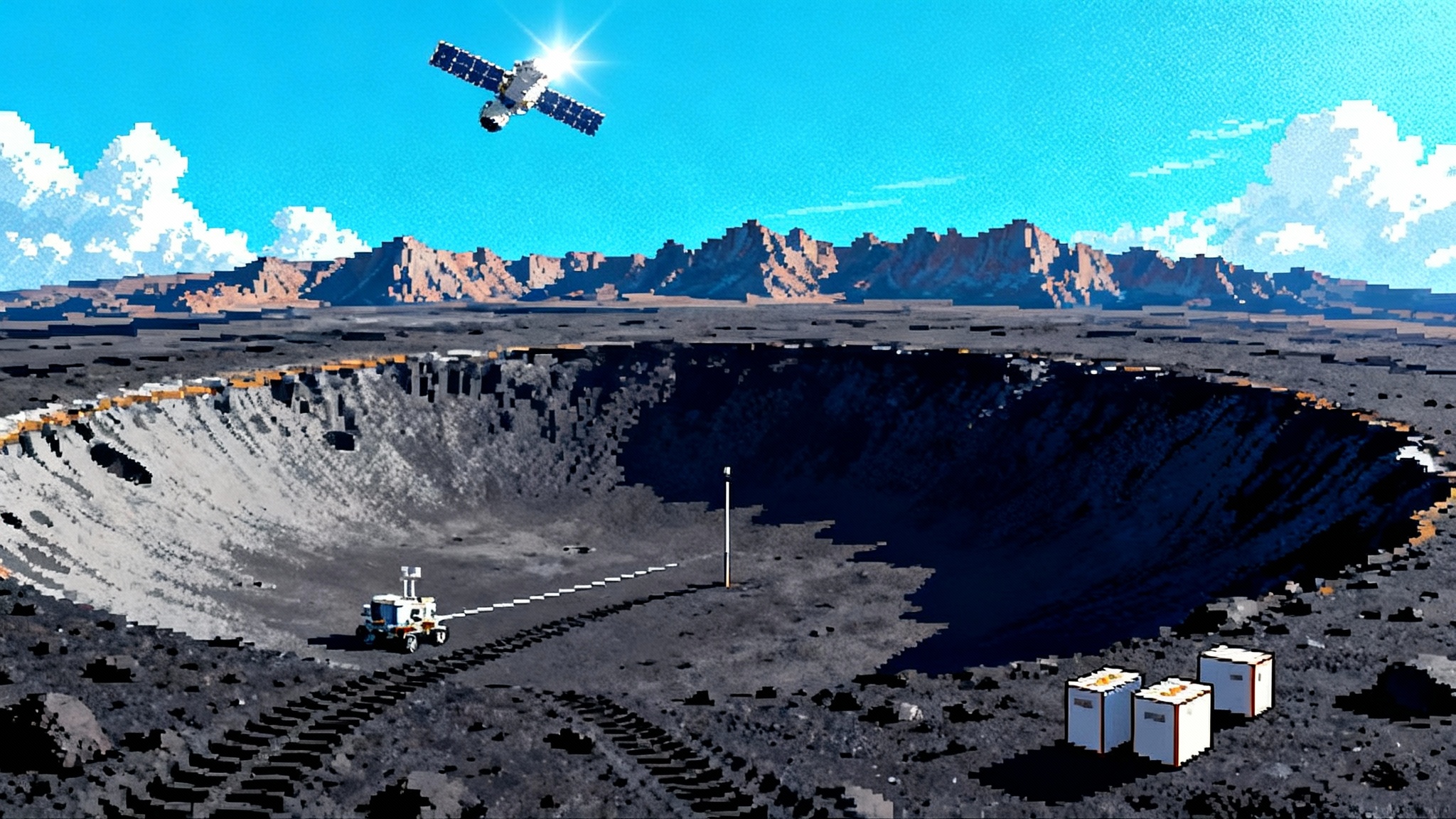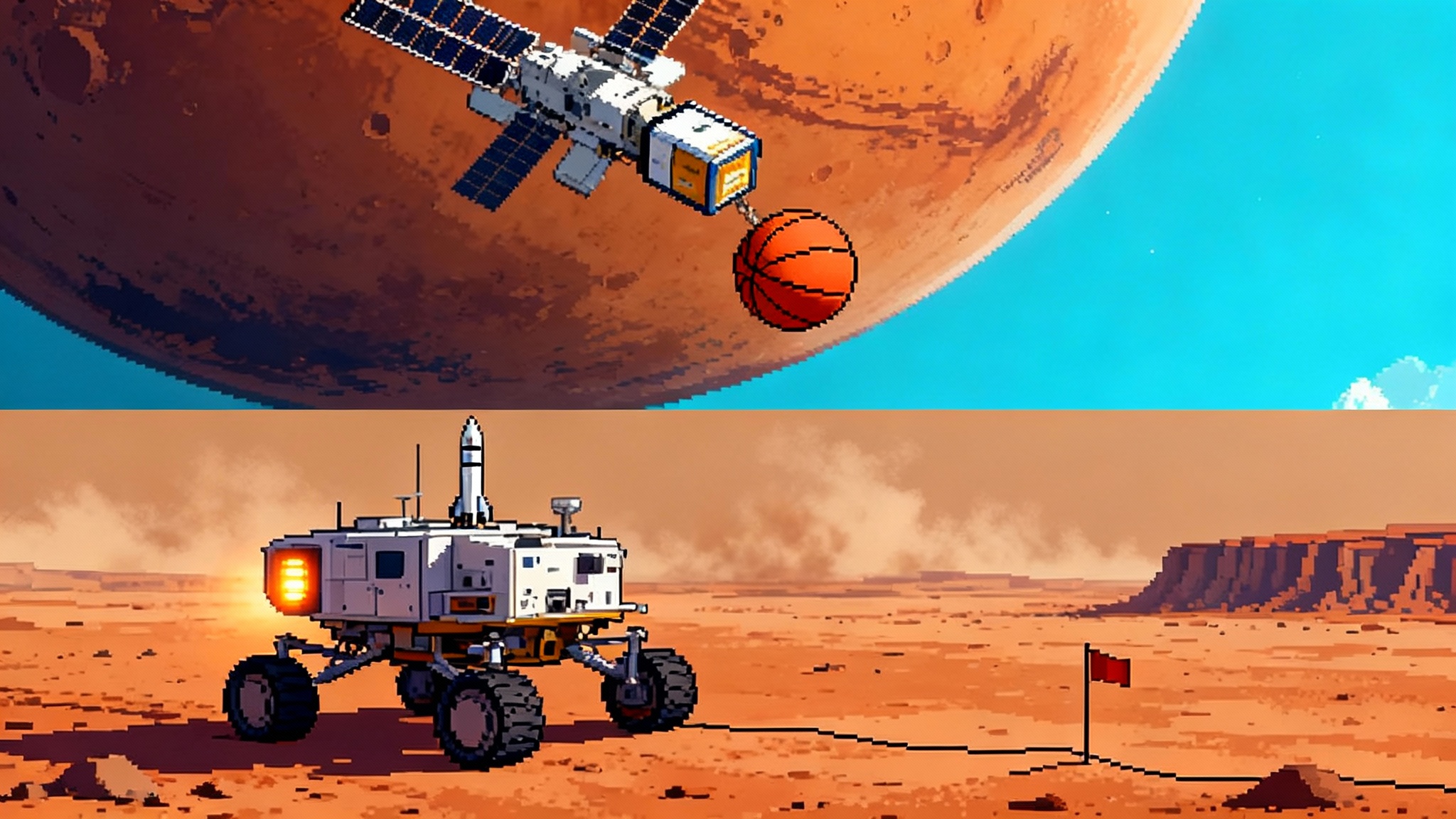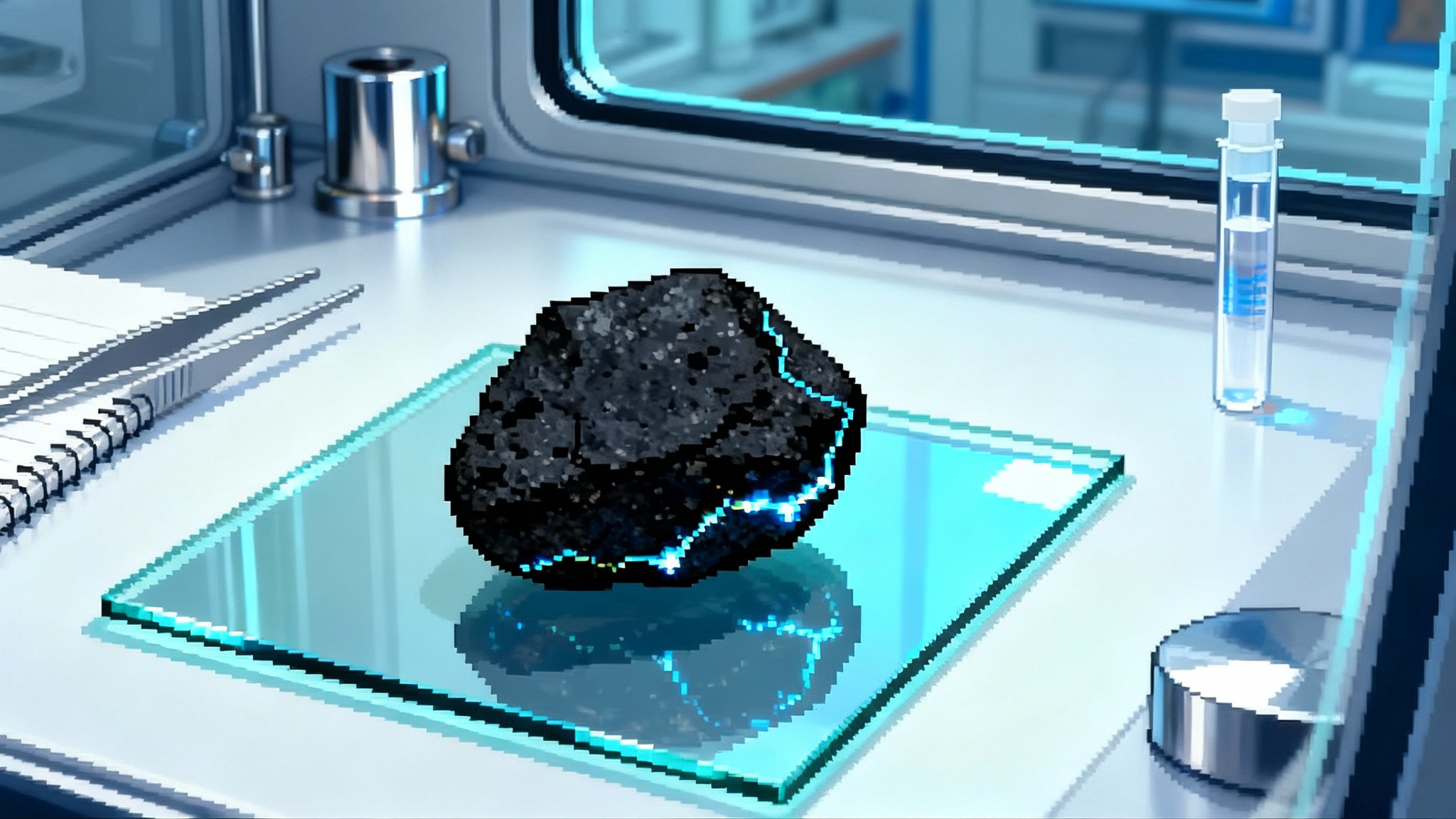New Glenn targets Mars: ESCAPADE and the flexible window
On its second flight, New Glenn aims to send NASA’s twin ESCAPADE probes toward Sun-Earth L2 to wait for the right Mars alignment. If it works, launch day becomes a flexible starting point for cheaper, more resilient interplanetary missions.

Breaking orbit, breaking habits
Blue Origin is back on the pad with New Glenn for its second flight and its first interplanetary assignment. The target is as ambitious as it sounds. Two identical NASA spacecraft called ESCAPADE, short for Escape and Plasma Acceleration and Dynamics Explorers, are headed for Mars to study the invisible weather that slams into the Red Planet every day. The company says it plans a November 9 launch from Cape Canaveral, Florida. This time the mission is not just about lighting seven engines and clearing the tower. It is about bending the calendar.
For decades, Mars missions have obeyed a stubborn rule of celestial mechanics. Launch when Earth and Mars line up every 26 months, ride a fuel efficient transfer, and arrive seven to eleven months later. Miss that window by days and a mission can be delayed by years. ESCAPADE is about to attempt something different. It will launch now, then wait in deep space until the timing is right to go to Mars. If New Glenn also sticks the booster landing on this flight, the win becomes bigger than a science mission. It becomes a playbook for more affordable Mars campaigns.
Why 26 months has ruled Mars for decades
Think of Earth and Mars as runners on a circular track. Earth is on the inside lane. Mars is on the outside. The fastest way to reach your friend in the next lane is to sprint when the two of you line up just right. Rocket scientists call that a Hohmann transfer, and nature offers that perfect handoff about every two years and two months. The timing is so strict that planetary missions often feel like college move-in day. Everyone shows up at once, and if your elevator is broken you wait while the line snakes around the block.
The 26 month rule has clear benefits. It minimizes the energy, or delta-v, needed to go from Earth’s orbit to Mars’ orbit. Less energy means a smaller rocket or more payload. It is why missions as different as Viking, Pathfinder, Curiosity, Perseverance, Mars Reconnaissance Orbiter, and the Emirates Mars Mission all crowded into similar seasonal launch slots.
But there is a hidden cost. Tying a mission to a few weeks every other year magnifies risk. Weather at the pad, a valve that will not close, range conflicts, a late test report. Any of these can push a team past the last day of the window. Suddenly a modest delay becomes a two year slip, with new storage costs, schedule churn across suppliers, and a heavier programmatic burden than the original technical issue.
Launch now, leave later: how ESCAPADE bends the calendar
ESCAPADE will try a move that mission designers call launch and loiter. Instead of firing directly onto a path to Mars, New Glenn will send the twin spacecraft toward the Earth–Sun L2 point, about 1.5 million kilometers beyond Earth on the night side. L2 is not a parking lot in the usual sense; it is a gravitational balance point where gentle station-keeping lets a spacecraft hover in a looping halo around the Sun–Earth line. From there the probes can wait in a quiet radiation environment, outside Earth’s belts, until Earth and Mars line up next year.
If the timing holds, ESCAPADE will swing back by Earth in late 2026 for a gravity assist and then head outward to intercept Mars in 2027. The plan cuts the emotional and financial cliff edge of the traditional window. It trades a little extra flight time and some station-keeping propellant for schedule resilience. Berkeley’s team and partners have openly described a launch and loiter path that queues spacecraft in deep space, then dispatches them when the planets align.
A metaphor helps. Picture a crowded highway on-ramp that only opens for a few weeks. Traditionally, every Mars mission must reach the gate on those days or turn around for two years. ESCAPADE wants to remove the gate. It plans to climb a nearby overpass, idle safely in the merge lane, and slide into traffic when the flow is perfect. The energy cost is higher than the perfect Hohmann, but the schedule cost is lower, and for many small missions the schedule cost is the bigger risk.
Two small spacecraft, one big science payoff
ESCAPADE is a pair of small orbiters built on Rocket Lab’s interplanetary platform for the University of California, Berkeley’s Space Sciences Laboratory, with leadership from NASA’s Heliophysics and Planetary Science communities and contributions from Advanced Space and Embry-Riddle Aeronautical University. The spacecraft are frugal in mass and power but sharp in purpose. Each carries three instruments:
- A magnetometer to sense how magnetic fields weave and twist around Mars.
- An electrostatic analyzer to count and sort charged particles from the Sun and from Mars’ own environment.
- A Langmuir probe to sample the density and temperature of the plasma.
The trick is flying the twins in complementary orbits. One samples closer to Mars’ magnetic boundary while the other measures farther out where the solar wind runs free. Space weather is a three-dimensional, time-changing fluid. With two points measured at once, scientists can tell whether a storm is passing by, growing, fading, or ricocheting off Mars’ patchy magnetic crust. It is the same reason terrestrial meteorologists deploy two radars or two weather balloons across a storm front. One snapshot is not enough. Two views start to show motion.
ESCAPADE’s data will sit beside and enrich records from NASA’s MAVEN orbiter and the Emirates Mars Mission. Together they can reveal how solar outbursts erode Mars’ atmosphere, how quickly the magnetosphere reshapes itself, and how particles rain down to create auroras unique to a world without a global magnetic field. For a Sun-side complement, see how IMAP maps the heliosphere during solar maximum.
From forecasts to flight rules: why real-time space weather at Mars matters
Space weather at Mars is like mountain weather in winter. Most days are manageable. Then a storm rolls in and everything changes in minutes. Charged particles from the Sun can scramble radio links, spike radiation dose, and push atmospheric density up at orbital altitudes, tugging on spacecraft and changing how parachutes behave.
Crews need numbers, not adjectives. How many minutes of warning will they get before a radiation spike, and by how much will the dose rise. How dense will the upper air be over the next few hours, and what does that do to an orbital rendezvous or a lander’s heat load. With two ESCAPADE orbiters sampling the upstream solar wind and the downstream response at Mars, mission control can move from generic caution to nowcasts. That means:
- Adjusting extravehicular activity plans in hours, not days.
- Repointing communications links to ride out a solar storm with minimal data loss.
- Predicting increased drag on orbiters and scheduling thruster burns before a conjunction.
- Refining entry, descent, and landing profiles when the upper atmosphere puffs up.
The value multiplies as more assets arrive. A small surface dosimeter at a habitat, a relay orbiter with a radiation counter, and ESCAPADE’s simultaneous measurements would create a triangle of data. That is how weather becomes an operational service rather than a series of after-action reports.
The commercial heavy-lift effect
There is another first here. New Glenn is a commercial heavy-lift vehicle taking on an interplanetary job that used to belong almost exclusively to government rockets or to a handful of commercial vehicles flying under government-style integration. The symbolism matters, but the mechanics matter more.
- Heavy lift means margin. ESCAPADE can bring propellant for station-keeping at L2 and for the Earth flyby without squeezing instruments.
- A reusable booster, if recovery succeeds on this second flight, pushes the price curve down over time. Lower marginal cost enables risk-tolerant innovation, which is exactly what launch and loiter demands.
- A second stage with the performance to send payloads toward escape opens a catalog of small interplanetary and cislunar missions. Mars smallsats now have a path that is less brittle to calendar slips.
On New Glenn’s first flight in January 2025, the upper stage reached orbit while the booster was lost during descent. That was acceptable for a debut because the objective was to validate ascent and orbital insertion. This second flight raises the bar. It asks the rocket to deliver a precise injection toward deep space and to try again to land its first stage on a ship in the Atlantic. If it sticks the landing, Blue Origin will have shown a path to interplanetary reusability that complements established systems in Earth orbit, alongside Starship shifts to payload ops.
What success would unlock next
Launch and loiter is not a one-off trick. It is an architectural tool that could:
- Spread Mars launches over many months, then synchronize departures during a later alignment.
- Turn Earth–Sun Lagrange points into staging areas for transfer burns, with standardized deep-space dispensers.
- Allow last-minute swaps of spacecraft that miss integration deadlines, since a later launch can still rendezvous at L2.
- Enable small science missions to share a heavy-lift ride to deep space rather than purchasing a bespoke direct injection.
There are trade-offs. Loitering demands excellent navigation and steady communications. Station-keeping over a year adds propellant and thermal complexity. Teams must be ready for a mission timeline that features a burst of activity at launch, a long quiet watch at L2, another burst near the Earth flyby, and then cruise to Mars. But these are solvable problems, and the benefits compound across a portfolio of missions.
How to judge this mission in real time
As New Glenn rolls toward liftoff, here are clear signals that the launch and loiter idea is working as intended:
-
Injection accuracy. Did the second stage place ESCAPADE on the corridor toward L2 with the expected energy and timing. A clean separation and minimal correction burns will preserve station-keeping fuel.
-
L2 halo capture and maintenance. Do the spacecraft enter a stable halo with propellant use close to plan. A calm year at L2 is the hinge of the concept.
-
System health during the long wait. Power, thermal control, and communications need to hum without the immediate reward of Mars in the camera frame. This is a test of discipline and design margins.
-
Earth swingby in late 2026. Gravity assists are routine, but the choreography from deep space is delicate. Hitting the aiming point with a small burn would validate the timing model.
-
Cruise and Mars arrival in 2027. Two healthy spacecraft entering their designed orbits is the ultimate proof that launching off-cycle did not poison the science.
-
Booster recovery. If New Glenn’s first stage lands on this flight, it sends an unmistakable market signal. Interplanetary payloads and partial reuse can coexist. If the booster is lost again, the mission still proves the deep-space side of the equation, but the cost curve bends more slowly.
Concrete takeaways for the people who decide what flies
-
For mission managers: add launch and loiter to your trade studies. Use it when schedule risk dominates energy cost. Bake in a year of station-keeping fuel and a disciplined long-coast operations plan.
-
For program executives: fund a standard deep-space dispenser that can host multiple small payloads to L2. The moment a heavy-lift rocket has margin, this becomes a way to batch missions without delicate interplanetary rideshares, echoing lessons from Mars Sample Return 2.0.
-
For crewed-Mars planners: specify real-time space weather thresholds that can be met by a two-spacecraft upstream-downstream pair plus a surface dosimeter. Tie those thresholds to go or no-go rules for spacewalks and aerocapture.
-
For launch providers: publish escape-class performance with loiter use cases and offer priced options for L2 staging. Make the operational model routine, not bespoke.
-
For universities and small companies: design instruments and software with delayed gratification in mind. A year at L2 requires autonomous health checks, low-data housekeeping, and patient calibration.
The upside if the booster lands
Recovery is not decoration. It is the lever arm that lengthens a program’s reach. A successful landing would validate thermal protection and engine relight environments after a heavy ascent, not just a suborbital hop. It would also help close the business case for flying more off-cycle deep-space payloads, since cost per kilogram can fall as recovered boosters fly again. Even if recovery takes a few tries, the interplanetary injection on this flight will already have moved the market by proving that a new commercial heavy-lift can do precise deep-space work.
A quiet revolution in timing
If ESCAPADE pulls off its patient path, this weekend will be remembered less for a countdown and more for a mindset shift. Launch day ceases to be a cliff. It becomes the first step in a relay. New Glenn gets the baton off the blocks. L2 holds it high for a lap. Earth’s gravity gives a crucial handoff. Then Mars takes over. The science is about the way charged particles strip a planet’s air. The strategy is about the way a flexible path can strip the calendar of brittle constraints.
That is how commercial heavy-lift, small satellites, and clever trajectories can work together. Not with bravado, but with a subtle change in what counts as possible. When you can launch now and leave later, you turn chance into choice. And that is the kind of breakthrough the Mars program has been waiting for.








